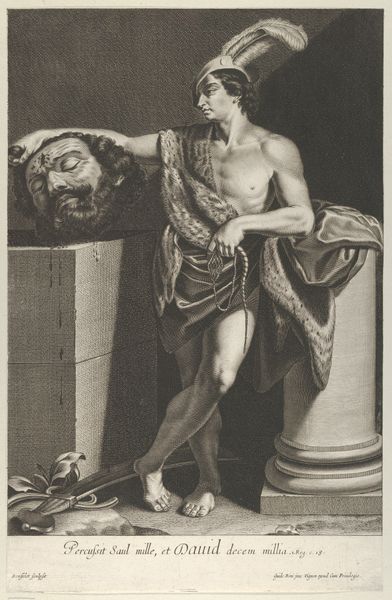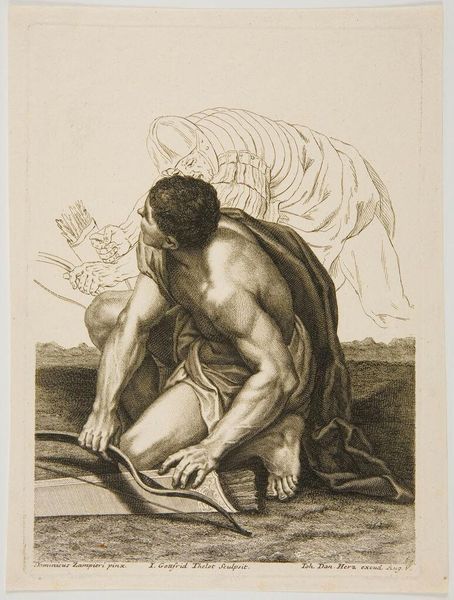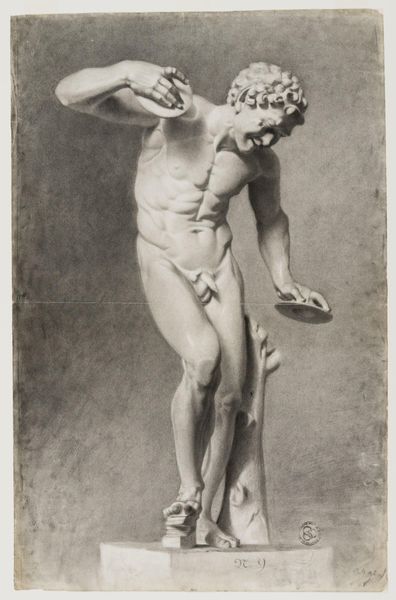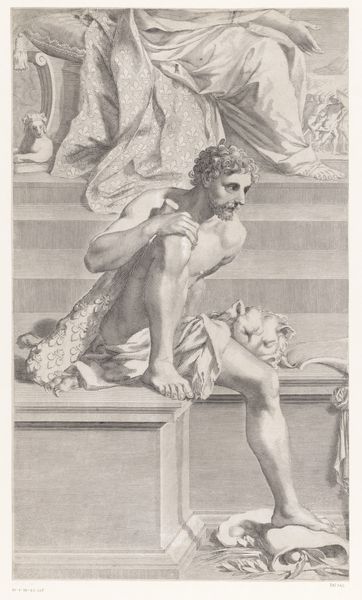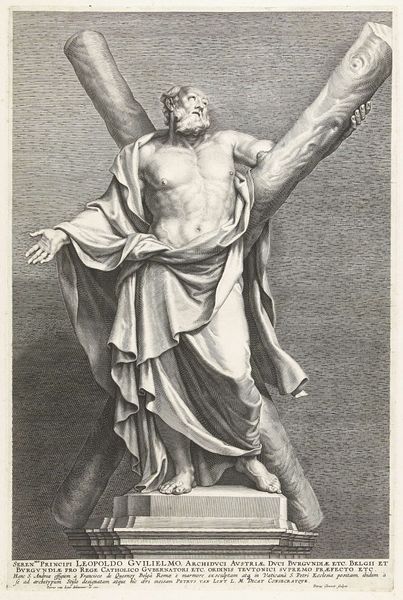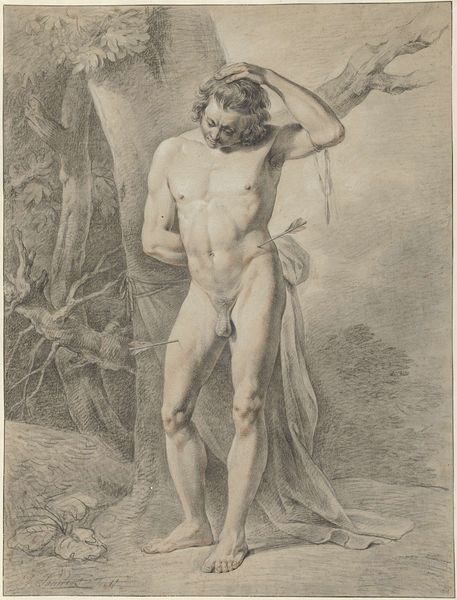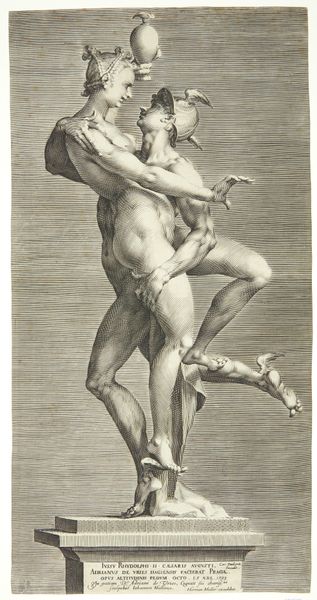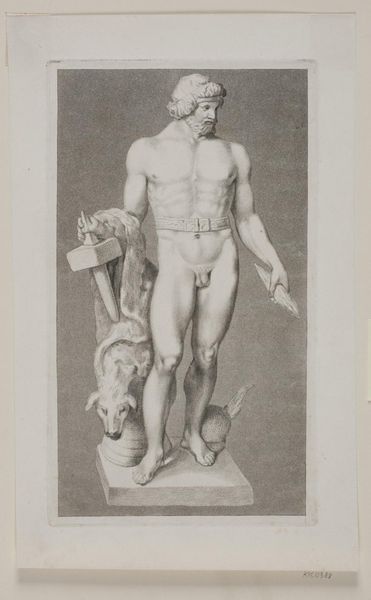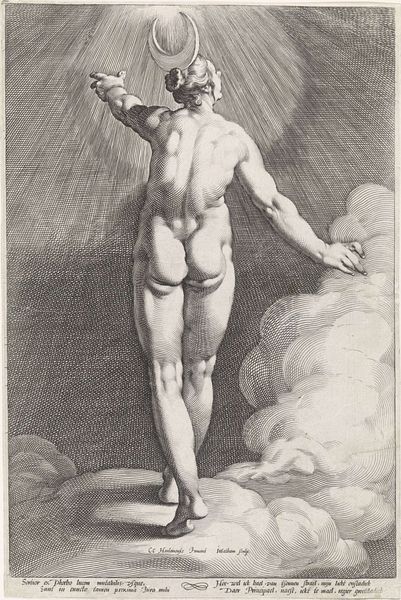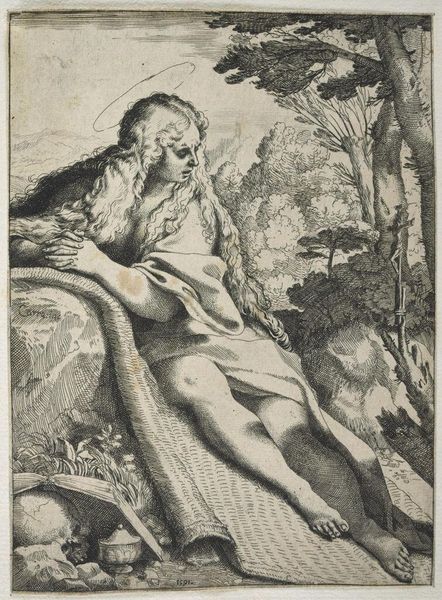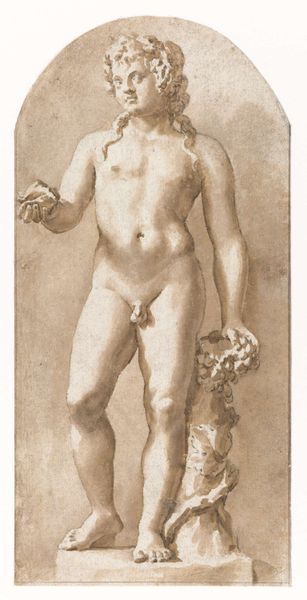
painting, oil-paint
#
baroque
#
painting
#
oil-paint
#
figuration
#
chiaroscuro
#
history-painting
#
italian-renaissance
#
nude
Copyright: Public domain
Curator: Let’s consider Juan Bautista Maíno’s "Saint John the Baptist," currently residing at the Kunstmuseum Basel. Editor: My first impression is one of tender vulnerability, and perhaps loneliness. The youthful figure almost melts into the shadows. The lamb nestles as if for comfort, under his touch. Curator: Absolutely. The work's engagement with identity politics cannot be understated. Maíno places John the Baptist within the intersectional frameworks of youth, spirituality, and a prelapsarian innocence, further underscored by his near nudity. Editor: The lamb, of course, immediately evokes a potent Christian symbol—the Agnus Dei, or Lamb of God, prefiguring Christ’s sacrifice. Even the reed cross at his feet participates in the narrative—symbols of penance and prophecy intertwining. Curator: I am interested, though, how it challenges typical depictions of sainthood, by emphasizing John’s humanity. It feels like a deliberate step away from the usual representations of powerful men as stoic warriors or ascetics. Editor: True. Instead of bold proclamation, there's a deep sense of introversion. The bouquet in his hand – barely illuminated – is curious. Are they symbols of nature's fragility or a tender offering to God? The symbolism feels deliberately open. Curator: This ambiguity resonates with queer theory and its unpacking of heteronormative portrayals in historical artworks, suggesting readings outside rigid interpretations. It provides an alternative to binary depictions of masculinity. Editor: The artist truly uses visual symbolism to communicate intangible emotional and spiritual states, linking back to earlier Renaissance uses of iconographic motifs. I keep thinking of how the chiaroscuro enhances this effect. Curator: It's interesting to view this through the lens of contemporary debates around gender expression. The subdued palette underscores this questioning. Editor: Seeing the history of visual culture woven into such a quietly revolutionary piece is always stunning to me. The artist is doing so much, yet in such a muted register. Curator: It provides us with another chance to reimagine representation, challenging what we accept as canon, or standard, across intersectional lines. Editor: Indeed. And hopefully inspires reflection beyond this room.
Comments
No comments
Be the first to comment and join the conversation on the ultimate creative platform.
